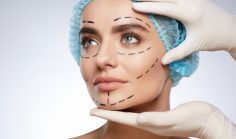In diabetic retinopathy, chronically elevated blood sugar levels interfere with circulatory function in the retina, causing small blood vessels to swell and rupture. This results in retinal swelling and clouded vision. Diabetic retinopathy is the leading cause of blindness among Americans between the ages of 20 and 74 years. The CDC reports that an estimated 4.1 million people are affected by retinopathy and that an additional 899,000 patients have vision-threatening retinopathy.
Diabetic Retinopathy

What Is Diabetic Retinopathy
What Causes Diabetic Retinopathy
If blood sugar (glucose) levels are too high for stretches of time, the capillaries (small blood vessels) that supply blood to the retina can be damaged. After a while, the capillaries start leaking fluids and fats. This in turn causes edema or swelling in the eyes. A condition called ischemia, in which the capillaries close off completely and blood supply to tissues is diminished, can also occur.
Risk Factors For Diabetic Retinopathy
Diabetic Retinopathy is caused by cases of advanced diabetes in which blood sugar is not well controlled. The following factors can affect the condition:
- Severity and duration of diabetes. Those with severe or well-established diabetes are at a higher risk of developing diabetic retinopathy.
- Smoking. Smoking can raise the risk of diabetic retinopathy and accelerate the progression of the condition.
- High blood pressure/cholesterol. High blood pressure or cholesterol can put additional stress on already vulnerable blood vessels in the eye.
Diagnosing Diabetic Retinopathy
There are several tests available to help diagnose diabetic retinopathy:
- Dilated Eye Exam. During this exam, the doctor uses special drops to dilate the pupil, and then looks into the eye with a microscope to find any abnormalities within the eye.
- Fluorescein angiography. During this test, patients are given an injection of dye into their arm. Their pupils are then dilated and their eyes are observed with a specialized camera that picks up the injected dye. This allows doctors to visualize damage to the blood vessels in the arm.
- Optical coherence tomography (OCT) exam. During this test, images of the retina are produced to determine what damage has been done to the tissue.
Symptoms of Diabetic Retinopathy
As with other eye conditions, diabetic retinopathy is usually asymptomatic at the beginning. As time goes by, your vision may become blurry and you may notice symptoms similar to the ones describes above for cataracts.
Prognosis
Early treatment can often slow the course of cataracts. Adherence to a healthy diet and regular administration of insulin can lower the risk of complications and blindness. Some patients, for unknown reasons, do lose their sight no matter what but many people have advanced diabetes for years and yet retain their vision.
Living With Diabetic Retinopathy
In many cases, depending on the eye disease or condition you have and your response to treatment, your vision may not be not noticeably impaired and you won’t experience any pain or only mild discomfort. However, you may need to compensate for partial loss of vision if you have a condition such as wet AMD that can’t be treated. Ask your eye care specialist about low-vision rehabilitation devices and services that will help you learn coping strategies so that you can to continue to live independently.
Many people with some vision loss have to stop driving. If that happens to you, visit SeniorDrivingAAA.comto get information about affordable and convenient ways to maintain your mobility.
Here are some top tips for living well with vision impairment:
- To wake up, a person may use a talking watch or talking alarm clock.
- To get dressed someone may have their own system of identifying clothes and colors. They might use safety pins to match the same color outfits together, or use Braille clothing tags.
- Instruction is available for visually impaired people to learn independent meal preparation skills. Special dots or Braille can be put on conventional and microwave ovens to aid in instruction and use.
- Someone with low vision might use a dark tablecloth with light colored dishes and a light tablecloth for dark dishes. Contrasting colors help individuals who have some remaining vision better see where things are.
- Similarly, someone with low vision might use dark mugs or glasses to pour light colored liquid such as milk and light colored mugs or cups to pour coffee or other dark liquids such as tea or hot chocolate.
- To locate keys, wallet or purse, they might make an effort to put them in the same place all the time so they can be found more easily.
- For leisure activities a person can watch audio described movies, listen to recorded books called Talking Books, play cards or other adapted games with friends.
Screening
Serious eye diseases and conditions often have no symptoms until irreversible damage to vision has been done. If you wear prescription glasses and/or contacts, you probably go to an optometrist for an annual check-up to make sure your prescription hasn’t changed and to order a new batch of contacts if you’re running out of them. Optometrists conduct vision tests to check for basic vision impairment, and can prescribe glasses and contact lenses. They can also spot early warning signs and give you a referral to an ophthalmologist, an eye doctor with a medical doctor degree, for a more thorough examination. If you do not wear contact lenses or glasses, chances are you miss out this periodic optometric screening. Many times, family doctors with conduct a visual acuity test, which is a series of letters decreasing in size on a chart that patients are asked to read to the best of their ability. This gives doctors the opportunity to do as the optometrists would.
The standard recommendation for all adults over the age of 40 is to have an eye exam at least every two years, and for adults over 65, to have an eye exam every year. According to the National Federation of the Blind, prompt detection and treatment can preserve your vision for a lifetime even if you do contract a serious eye condition or disorder. Schedule an eye exam with an optometrist. If he or she spots any problems that may be of concern, you will most likely be referred to an ophthalmologist, a medical doctor specializing in eyes, for further testing. Be sure to make an appointment with the ophthalmologist and follow recommendations regarding the frequency of follow-ups should any diseases or conditions be detected.
People with diabetes or at risk of developing gestational diabetes are recommended to get additional ophthalmic screening. The American Academy of Ophthalmology recommends the eye screening schedule:
- Type 1 Diabetes: Within five years of being diagnosed and yearly thereafter.
- Type 2 Diabetes: At the time of diagnosis and yearly thereafter.
- During pregnancy: During the first trimester and follow-ups if indicated.
Prevention
Medline Plus, a service of the National Library of Medicine, reminds us our best defense is to have regular checkups because eye diseases do not always have symptoms. Early detection and treatment are the keys to preventing vision loss.
Beyond that, a healthy diet that has sufficient vitamin and other nutrients will help keep your eyes lubricated and free of infections.
Also, avoid second hand smoke and if you smoke, kick the habit.
Protect your eyes from injury by wearing plastic eye guards if you’re involved in any activity that poses a risk of flying objects or particles.
Finally, remember that overexposure to the sun is just as bad for your eyes as it is for your skin. Wear sunglasses and stay away from tanning beds
Medication And Treatment
The following treatments are available for diabetic retinopathy patients:
- Laser treatments. In these procedures, lasers are used to seal or “weld” a detached portion of the retina back into place.
- Photocoagulation treatment. In this procedure, hundreds of quick flashes of laser light are scattered across the retina in order to seal abnormal blood vessels. This treatment can be used only as long as no bleeding or detachment of the retina has already occurred.
- Improved diabetes management. Utilize the lifestyle changes, medications, and other treatments prescribed by your primary care physician to keep you blood sugar in a healthy range to avoid the consequences of chronically elevated glucose levels, like kidney failure, ulcers, and worsening diabetic retinopathy.
Complementary and Alternative Treatment
No dietary supplements have been shown to be helpful for diabetic retinopathy.
When To Contact A Doctor
In addition to your regularly scheduled visits to your eye care professionals, get immediate medical attention if you notice any sudden change in your vision or experience unusual symptoms such as extreme eye pain, burning, itching, redness, or fluid coming out of your eye. Also, get help if you have an eye injury.
Questions For A Doctor
Before you visit your doctor, write down a list of questions and concerns. Consider bringing a friend or family member along who can help you make sure you get all the information you need. In addition, writing down the doctor’s answers and recommendation for later reference is a good idea. Also come prepared with your medical history, information about any allergies you have, your family medical history, and a complete list of all medications you take including over-the-counter herbs and supplements.
Here are some questions you might pose when you visit your optometrist:
- I started having trouble reading up close, not long after I became aware of this, I bought a pair of readers at the drugstore. Is that OK? And did I pick the right strength?
- I’ve always been nearsighted. Do I now need bifocals or progressive lenses?
- I’ve heard about progressive contact lenses and monovision lenses. Would one of those options be right for me?
- My eyes feel dry even when I blink. Is that a sign of a condition I’ve heard about called dry eye?
- My eyes tear in cold weather, especially when it’s windy out. Is that a bad sign?
- I work at a computer all day. Is that a risk for eyestrain?
- Has my prescription changed in the last year? If so, is that a bad sign?
Here are some questions you might pose if you are referred to an ophthalmologist:
- Which eye diseases or conditions are you screening me for?
- If you diagnose an eye disease or condition, how much will medication and/or surgery cost?
- Will the treatments control my problems so that I retain my vision?
- How often will I need to come back to you for check-ups?
- Should my adult children be checked if my condition is hereditary?
- Are there any lifestyle changes I can make that will help prevent other eye diseases or the progression of the ones I already have?










